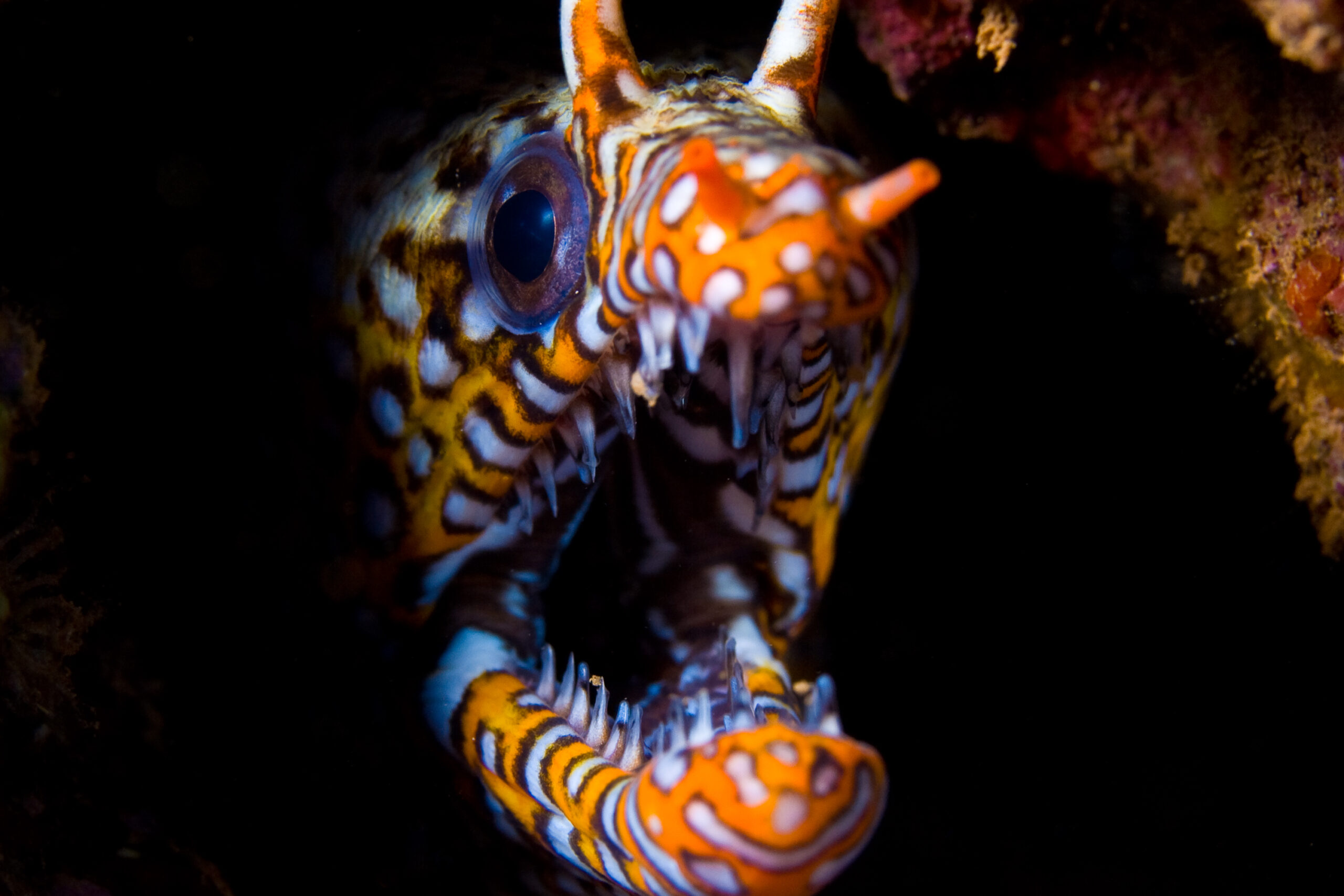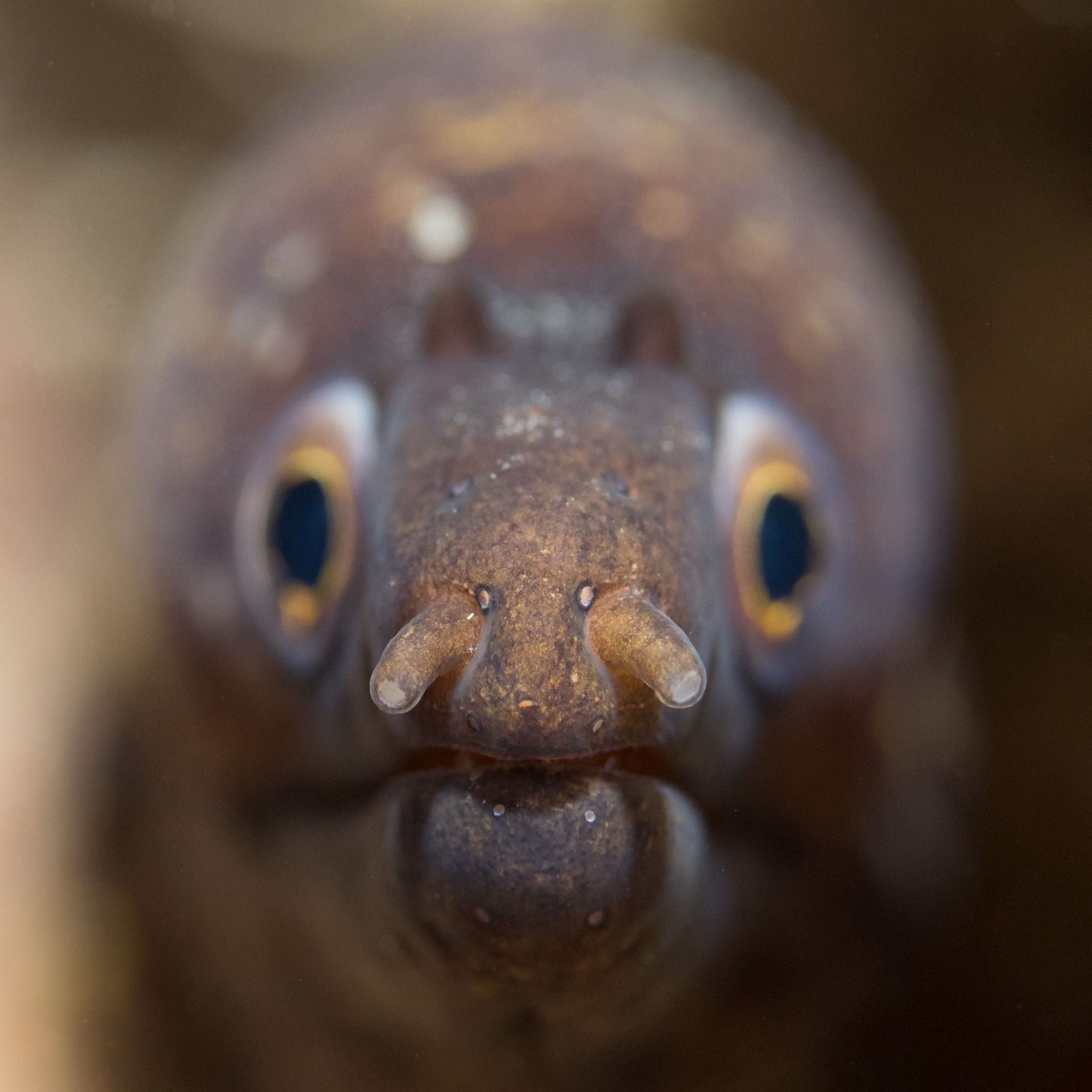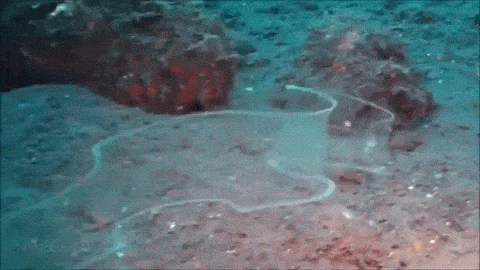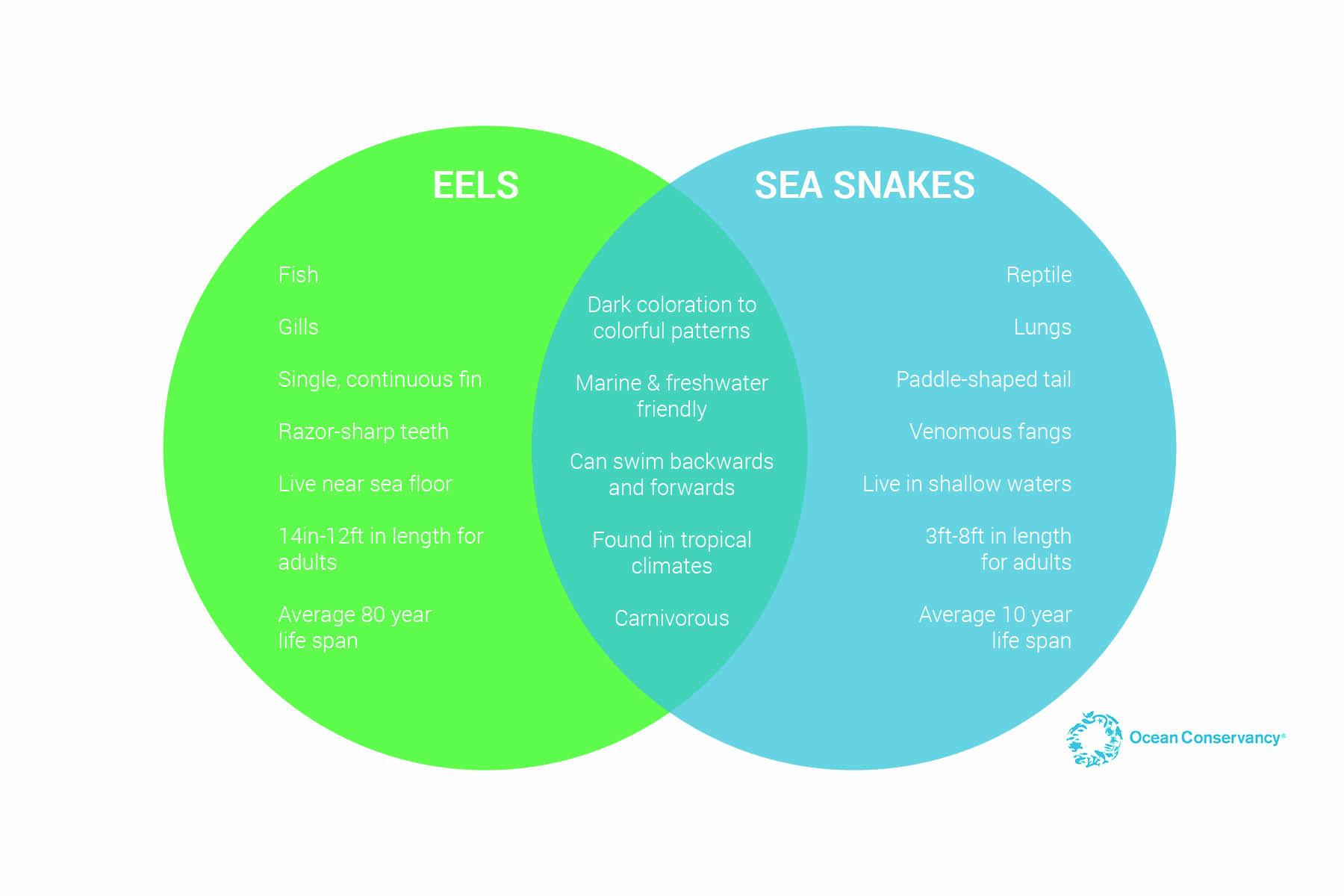The Difference Between Eels and Sea Snakes
Something slithery this way comes

When exploring the magnificent open waters of the ocean, there are so many creatures and various species to find, some of which are still undiscovered. But some of those we have discovered include eels and sea snakes, two extremely different animals that are often mistaken for one another. But no need to worry, read on and we will guarantee to have you properly prepared for your next encounter with either of these ribbons of the sea.

What They Look Like
Let’s start off with internal and external characteristics that set these two apart and more importantly, how the human eye can spot the main differences.

Eels are a type of fish. Currently, they are classified under the order Anguilliformes with more than 800 different species such as worm eels (family Moringuidae), garden eels (family Congridae), cutthroat eels (family Synaphobranchidae) and, of course, the more Disney-friendly moray eels (family Muraenidae). Since they are a fish, they have gills and live in the water their entire lives. Their fin is singular and continuous, stretching down the dorsal, anal and caudal sides. Eels have elongated bodies with pointed heads, forming a snout and razor-sharp teeth. Although their teeth are not poisonous, there have been suspicions in the scientific community that moray eels produce a toxic slimy coat that creates a higher risk of infection to those who come in contact with them. So if you do find yourself with an accidental eel bite, it would be in your best interest to find a doctor and some antibiotics. Eels can range in size from four inches to 12 feet and are typically a muddy gray or brown tone but can have bright colors and patterns in more tropical areas.

And, before we get to the appearance of sea snakes, we should make a clarifying point about electric eels. Electric eels (Electrophorus electricus) are not eels, but actually part of the knifefish family (Gymnotidae) and more closely related to catfish and carp. Although they look similar to true eels in terms of shape and size, their ability to emit an electrical charge when they feel threatened, or when preparing their next meal, puts them in a classification of their own, like the vampire squid (Vampyroteuthis infernalis). The power they generate is roughly five times the amount of power in a standard wall socket and can have an effect up to eight hours after their death. They can be found in the muddy bottom of rivers and the occasional swamp.

Where They Live
Depending on what areas you are exploring, you may never even find yourself in the presence of an eel or sea snake, but for the next time you’re planning your vacation to the ocean or diving expedition, here’s some information that may help in choosing your destination.


Just like eels, sea snakes are both marine and freshwater friendly. They also prefer warm temperatures and are typically spotted in the shallow waters of the Indian Ocean and warmer areas of the Pacific Ocean. Since they need air, they usually live in waters less than 30 meters deep and dive down to the seafloor to hunt. Sea kraits (Laticauda) lay eggs on land, nesting on limestones caves and rock crevices; true female sea snakes, however, carry their eggs and then give live birth in the water.
What They Eat
Let’s face it, what we really care about is food and that irrational (but still somehow rational), fear that an eel or sea snake might decide that we’re their next lunch. Hint: They aren’t vegan.

Sea snakes have a highly specialized diet. Since they are generally meek, sea snakes thrive on hunting wounded or diseased fish, which promotes a healthy fish population within the coral reef ecosystem. Surprisingly, some sea snakes have been known to include eels in their diet, always swallowing their prey whole.
If all of this was overwhelming: here is a quick snapshot of the key differences between eels and sea snakes!

So the next time you encounter an eel or sea snake, don’t panic. They’re just trying to live their best life.
